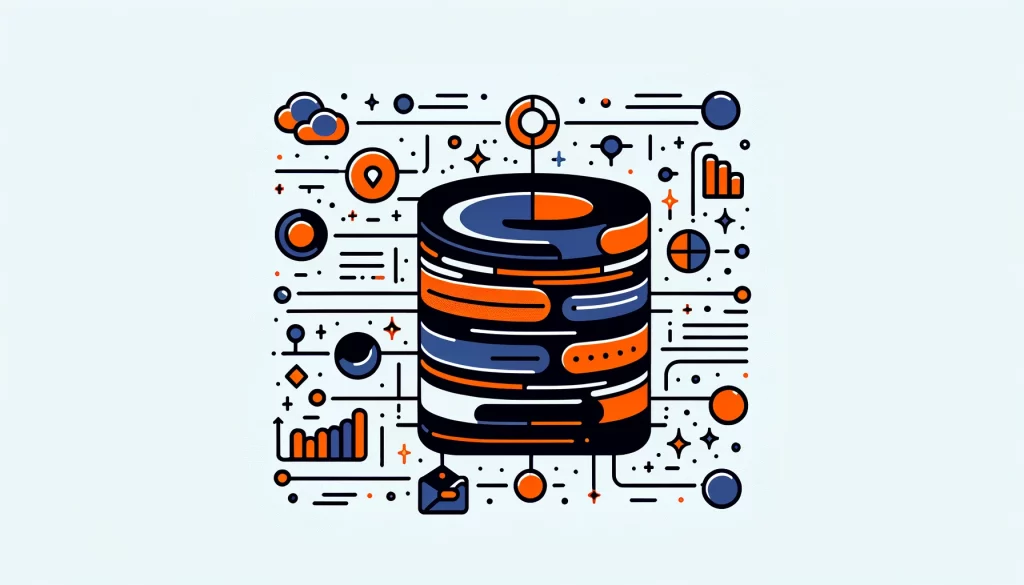
Data Catalog Features

A data catalog is a powerful tool that enables companies to organize, discover, and understand their data assets. However, not all data catalogs have the same quality. Organizations should look for data catalog features to help them achieve their data management goals. These features will help organizations get the most out of their data.
By searching for these features, organizations can improve their data management practices. This will ultimately lead to better utilization of their data.
What is a Data Catalog?
A data catalog is a crucial tool for organizations looking to effectively manage and utilize their data assets. A data warehouse is a central place that organizes and explains all of an organization’s data sources. It provides a complete picture of the data available.
A data catalog helps users find and access information easily by organizing and categorizing data assets. This improves data governance and decision-making.
A data catalog organizes and describes data assets. It also tracks where the data comes from, assesses its quality, and manages metadata. Data lineage tracking allows users to trace the origins and transformations of data, ensuring data accuracy and reliability.
Data quality assessments help users determine if their data is reliable, allowing them to make informed decisions. Metadata management helps users add context and meaning to their data, making it easier to understand and use effectively.
A data catalog is important for organizations to make the most of their data assets. A data catalog helps users find and access data easily, ensuring its quality and governance. This helps users make better decisions and drive business success. It provides a single point of reference for data users to discover, understand, and access the data they need.
Key Data Catalog Features
To effectively manage and leverage data assets, organizations should look for the following key data catalog features:
Automated Data Discovery and Ingestion
A data catalog can automatically find and add metadata from various data sources, making it a valuable tool. This includes databases, files, applications, and external APIs. The data catalog should continuously scan these sources for new data sets and update its inventory accordingly. This automation saves time and keeps the data catalog current as the organization’s data changes over time.
Powerful Search Capabilities
Another essential data catalog feature is a powerful search interface. Data users should be able to easily search for relevant data assets using natural language queries or keywords. The search results should include relevant metadata, such as data descriptions, owners, and lineage information. Advanced data catalogs can use AI to improve search results by understanding user intent and providing more accurate information.
Business Glossary Integration
Integrating the data catalog with the organization’s business glossary is another crucial feature. The business glossary explains important words and ideas used in the business. It helps ensure consistent description of data assets.
This integration links technical details with business information. It makes the data catalog easier to understand. It also makes it more useful for non-technical users.
Data Quality Monitoring
Data quality is essential for ensuring that data is reliable, accurate, and useful for decision-making. Without high-quality data, organizations may make incorrect decisions or miss out on valuable insights. A data catalog is important for managing data quality. It provides tools to monitor and track data quality over time.
A data catalog includes data profiling, which looks at how complete, accurate, and consistent data sets are. Data profiling tools find missing or duplicate data and inconsistencies in data formats that affect data quality. Organizations can make better decisions and improve business results by regularly checking their data for accuracy and currency.
In addition to data profiling, a data catalog may also offer features such as data lineage tracking, data quality monitoring, and data governance capabilities. These features help organizations maintain high data quality standards and ensure that data is trustworthy and reliable. Investing in a good data catalog with quality features helps organizations improve data quality and achieve better business outcomes. Advanced data catalogs can use machine learning algorithms to find anomalies and notify users about possible data quality problems.
Rich Metadata Management
Managing metadata is essential for a data catalog, which should be able to handle different types of metadata. This includes technical metadata (e.g., data types, schemas), business metadata (e.g., data owners, business rules), and operational metadata (e.g., data lineage, usage metrics). The data catalog needs tools for adding more information to data.
These tools can help with organizing and labeling data. This makes it easier for people to find and understand the data.
Collaboration and Data Democratization
A data catalog is a centralized repository that houses metadata and information about the data assets within an organization. It serves as a tool to help data users easily discover, understand, and access the data they need for their projects.
A data catalog helps teams work together and share information easily within a company. A data catalog helps users collaborate by sharing insights, leaving comments, and working together on data projects. This can lead to more innovative solutions, better decision-making, and improved overall performance.
When data users are able to easily collaborate and share their findings within a data catalog, it can help break down silos and promote cross-functional communication. This can lead to a more holistic view of the data and enable different teams to work together towards common goals.
A data catalog helps teams collaborate, generate new ideas, and improve data usage efficiency. A data catalog can help organizations fully utilize their data resources. It provides a platform for sharing insights and collaborating on data projects.
A data catalog helps business users find and use data for decision-making and innovation. It allows them to do this without needing assistance from IT or data teams.
Data Lineage and Impact Assessment
Data lineage and impact assessment are critical data catalog features for data governance and compliance. It shows how data moves from start to finish, helping understand how data moves through an organization’s systems. Impact assessment helps identify the potential impact of changes to data assets on downstream processes and reports. These features enable organizations to manage their data assets more effectively and ensure regulatory compliance.
Examples of Data Catalog Features in Action
Let’s explore how we can use these data catalog features in real-life situations to better understand their importance.
Marketing Campaign Optimization
The marketing team can easily search the data catalog to find customer data for their next campaign. The business glossary integration ensures that the team uses consistent terminology when referring to customer segments and campaign metrics. The data quality monitoring feature helps the team trust the accuracy of the customer data they are using. By leveraging these data catalog features, the marketing team can create targeted and effective campaigns that drive business results.
Risk Management and Compliance
Banks use a data catalog to organize metadata. This helps them track data lineage. It also helps them manage their risk data assets more effectively. By keeping track of risk data lineage, the institution can make sure it follows regulations like BCBS 239.
The data catalog allows risk analysts and data stewards to collaborate in identifying and reducing risks. The impact assessment feature helps the institution understand the potential impact of changes to risk models and reports.
Supply Chain Optimization
A manufacturing company can leverage the data catalog’s automated data discovery and ingestion features to quickly onboard new supplier data. The powerful search capabilities enable supply chain analysts to easily find relevant data assets, such as supplier performance metrics and inventory levels.
The data quality monitoring feature helps the company make sure they are using accurate and reliable data. This helps them plan and improve their supply chain. By using these data catalog features, the manufacturing company can streamline its supply chain operations.
Conclusion
In summary, the data catalog features discussed in this article are crucial for organizations looking to enhance their data assets. These features are essential tools for organizations. They help in managing and utilizing data effectively.
Organizations can benefit greatly from using these data catalog features. These features are crucial for organizations looking to make the most of their data. Organizations can benefit from utilizing these important data catalog features.
Organizations need key features to effectively manage and leverage their data. These features include automated data discovery, powerful search, and business glossary integration. They also include data quality monitoring and metadata management. Additionally, collaboration, data democratization, and data lineage analysis are important for organizations.
By investing in a data catalog solution that offers these features, organizations can improve data discovery, governance, and utilization. They can assist data users in finding and using the necessary data. They also ensure that the data is of high quality, consistent, and compliant with regulations.
